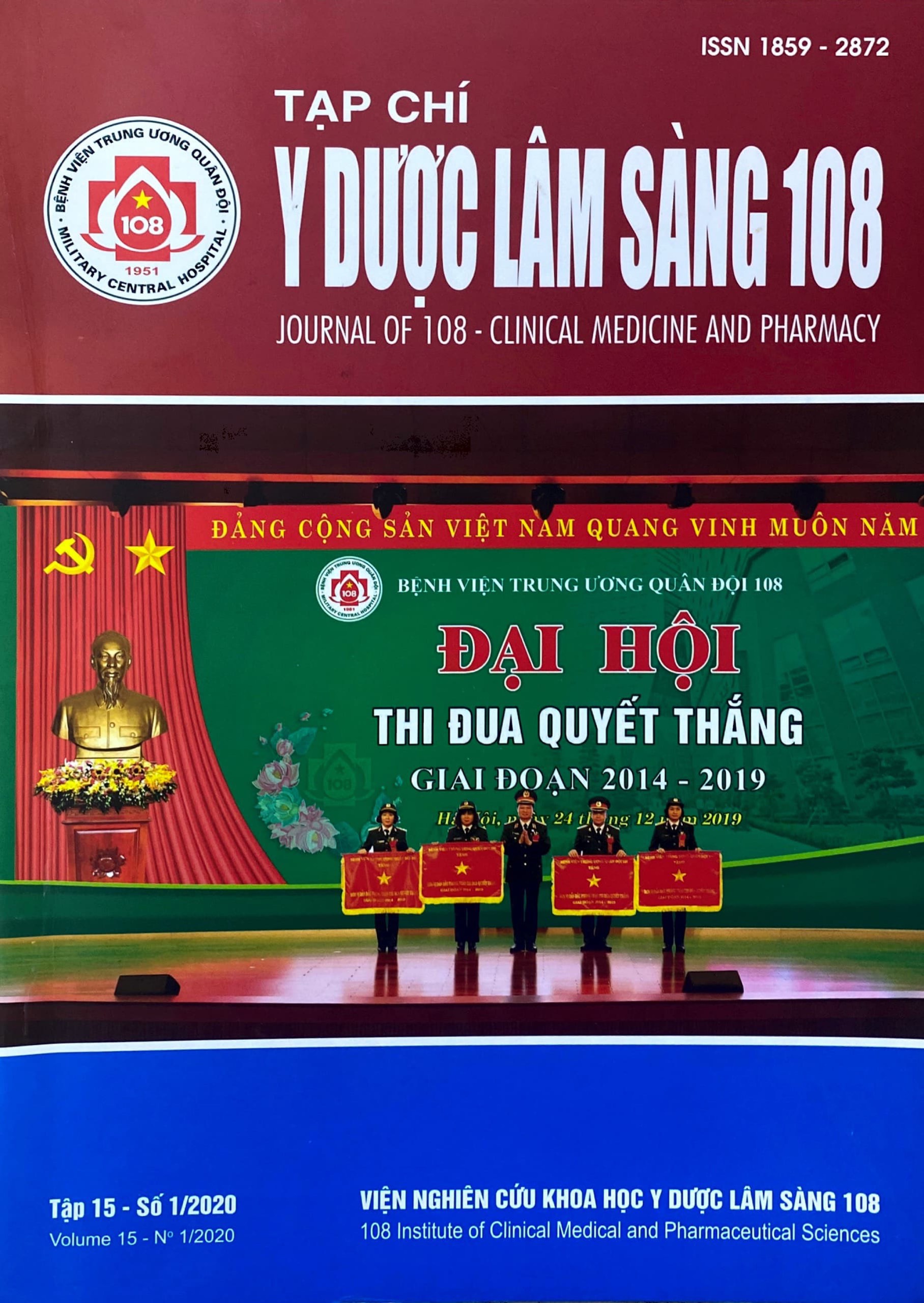IL-17 serum in patients with chronic spontaneous urticaria at Hospital of Dermato-Venereology, Ho Chi Minh City
Main Article Content
Keywords
Abstract
Objective: To determine serum concentrations of IL-17 and its associated factors in chronic spontaneous urticaria (CSU) patients. Subject and method: Case series report, ninety patients with chronic urticaria were enrolled into this study from December 2018 to August 2019. Determination of serum IL-17 was performed by means of ELISA (Enzyme Linked Immuno Sorbet Assay), using Human IL-17A ELISA Kit from ANOGEN company, Ontario, Canada. Code EL10053. Severity of disease was evaluated by Urticaria Activity Score 7 (UAS7) in a one-week period for every patient. For statistical analysis we used SPSS ver. 20.0 software. Result: The serum levels of IL-17 (mean ± SE) were 11.07 ± 19.26pg/mL. IL-17 level was higher in CSU patients with angiodema (5.28pg/mL) compared with those without angiodema (3.02pg/mL). This difference was statistically significant (p=0.006). IL-17 serum concentration was significantly higher in severe CSU patients as compared with mild CSU patients (4.72 vs 2.17pg/mL, p=0.036). Conclusion: Serum IL-17 levels were highly elevated in patients with chronic urticaria. It has been suggested that IL-17 may play an important role in chronic urticaria pathophysiology. Elevated serum concentration of IL-17 could be also used as a predictor of disease’s severity.
Article Details
References
2. Crişan Loana G, Bocsan Corina I, Vesa Stefan C et al (2014) Correlations between serum levels of IL-17, IL-4, IL-31, IFN-gamma and etiological factors in patients with chronic spontaneous urticaria. Human & Veterinary Medicine 6(1): 25-29.
3. Dos Santos JC, Azor MH, Nojima VY et al (2008) Increased circulating pro-inflammatory cytokines and imbalanced regulatory T-cell cytokines production in chronic idiopathic urticaria. Int Immunopharmacol 8(10): 1433-1440.
4. Greaves M (2000) Chronic urticaria. J Allergy Clin Immunol 105(4): 664-672.
5. Greaves MW (1995) Chronic urticaria. N Engl J Med 332(26): 1767-1772.
6. Greaves MW (2003) Chronic idiopathic urticaria. Curr Opin Allergy Clin Immunol 3(5): 363-368.
7. Grzanka A, Damasiewicz-Bodzek A and Kasperska-Zajac A (2017) The relationship between circulating concentrations of interleukin 17 and C reactive protein in chronic spontaneous urticaria. Allergy, Asthma & Clinical Immunology 13(1): 25.
8. Habif TP (2010) Urticaria and agioedema. Clinical Dermatology: A color guide to diagnosis and therapy fifth edition, Mosby.
9. Kim BS, Park YJ, Chung Y (2016) Targeting IL-17 in autoimmunity and inflammation. Arch Pharm Res 39(11): 1537-1547.
10. Wei Lin, Qiongyan Zhou, Chunbo Liu et al (2017) Increased plasma IL-17, IL-31, and IL-33 levels in chronic spontaneous urticaria. Scientific Reports 7(1): 17797.
 ISSN: 1859 - 2872
ISSN: 1859 - 2872
